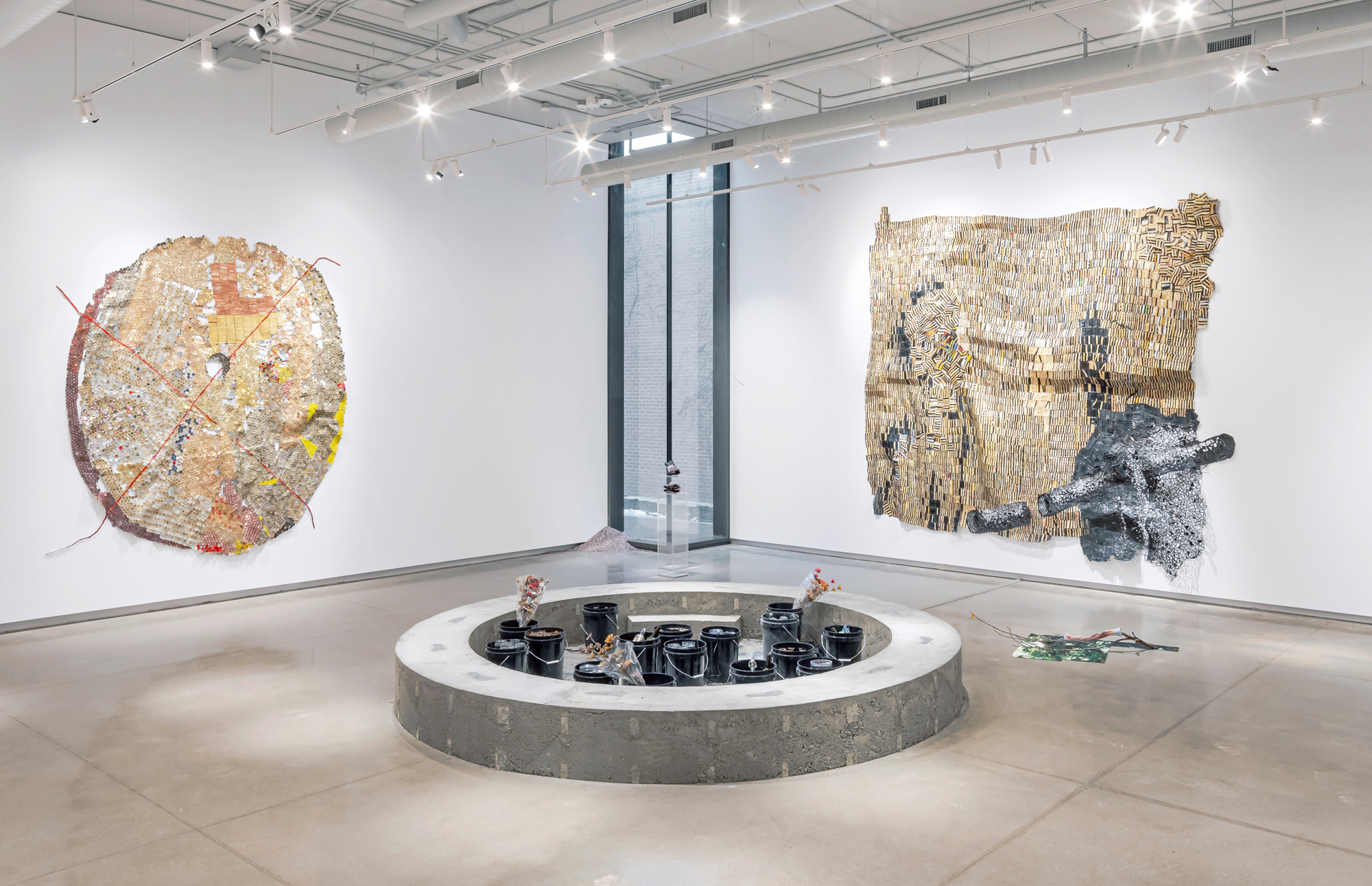
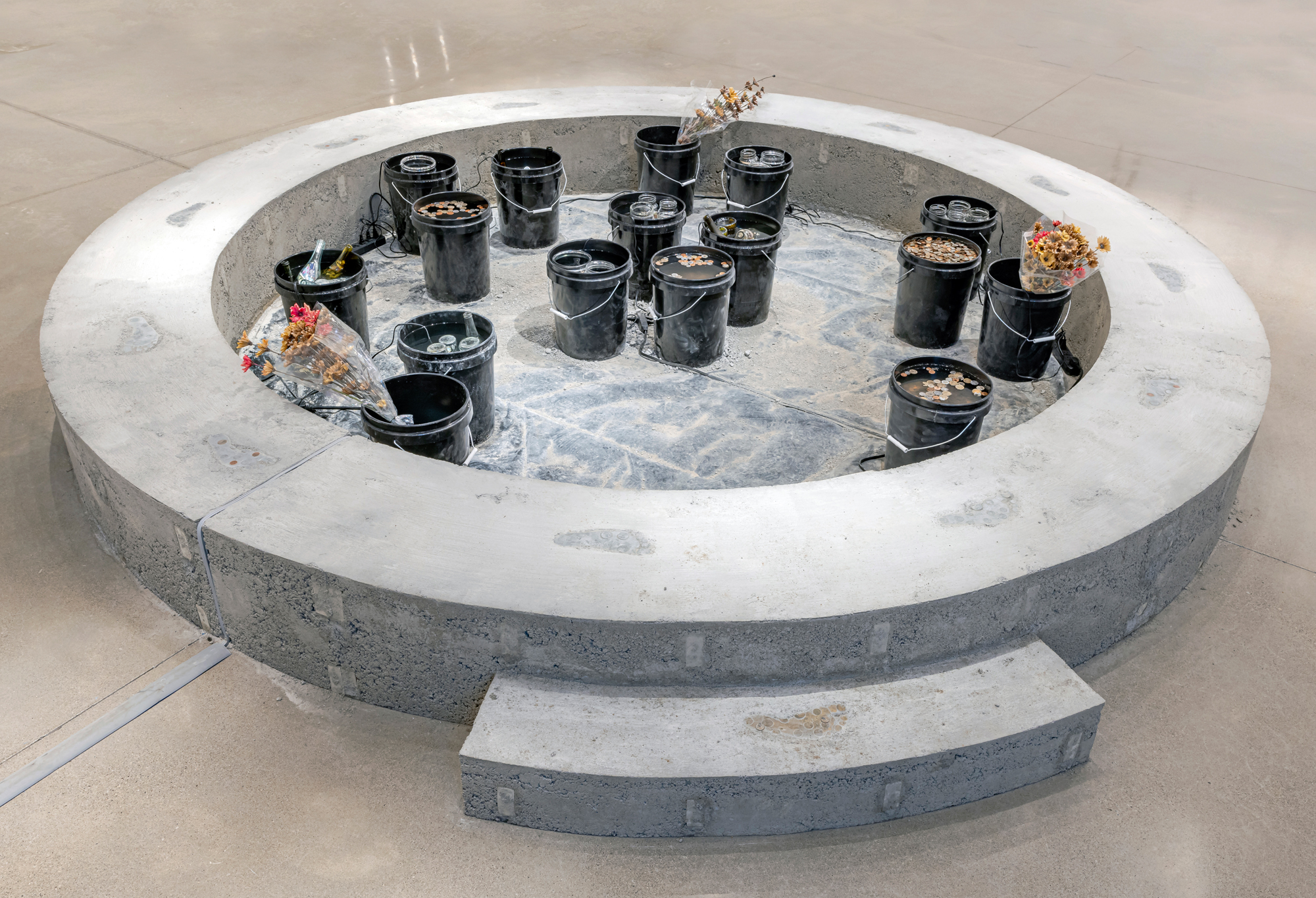
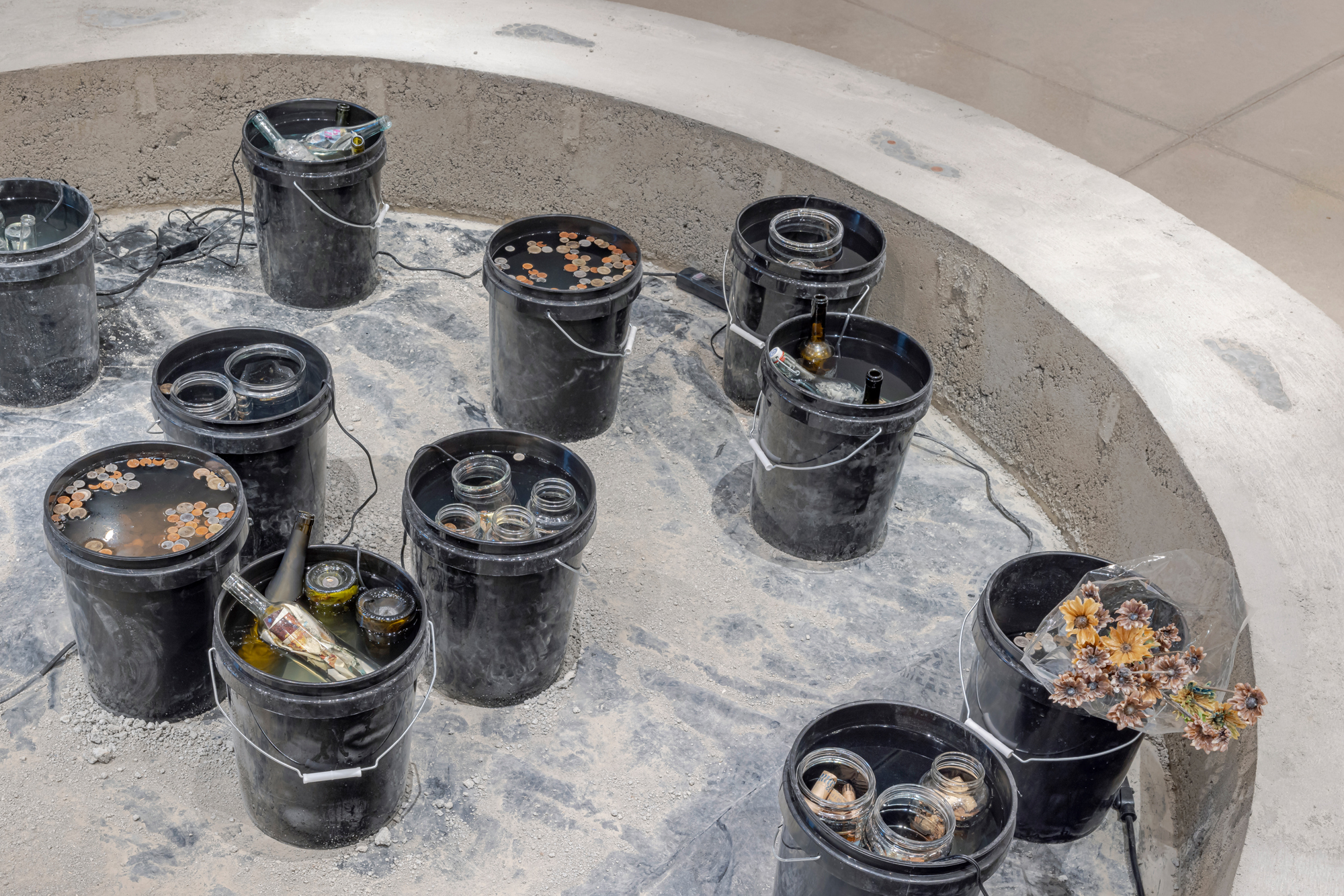
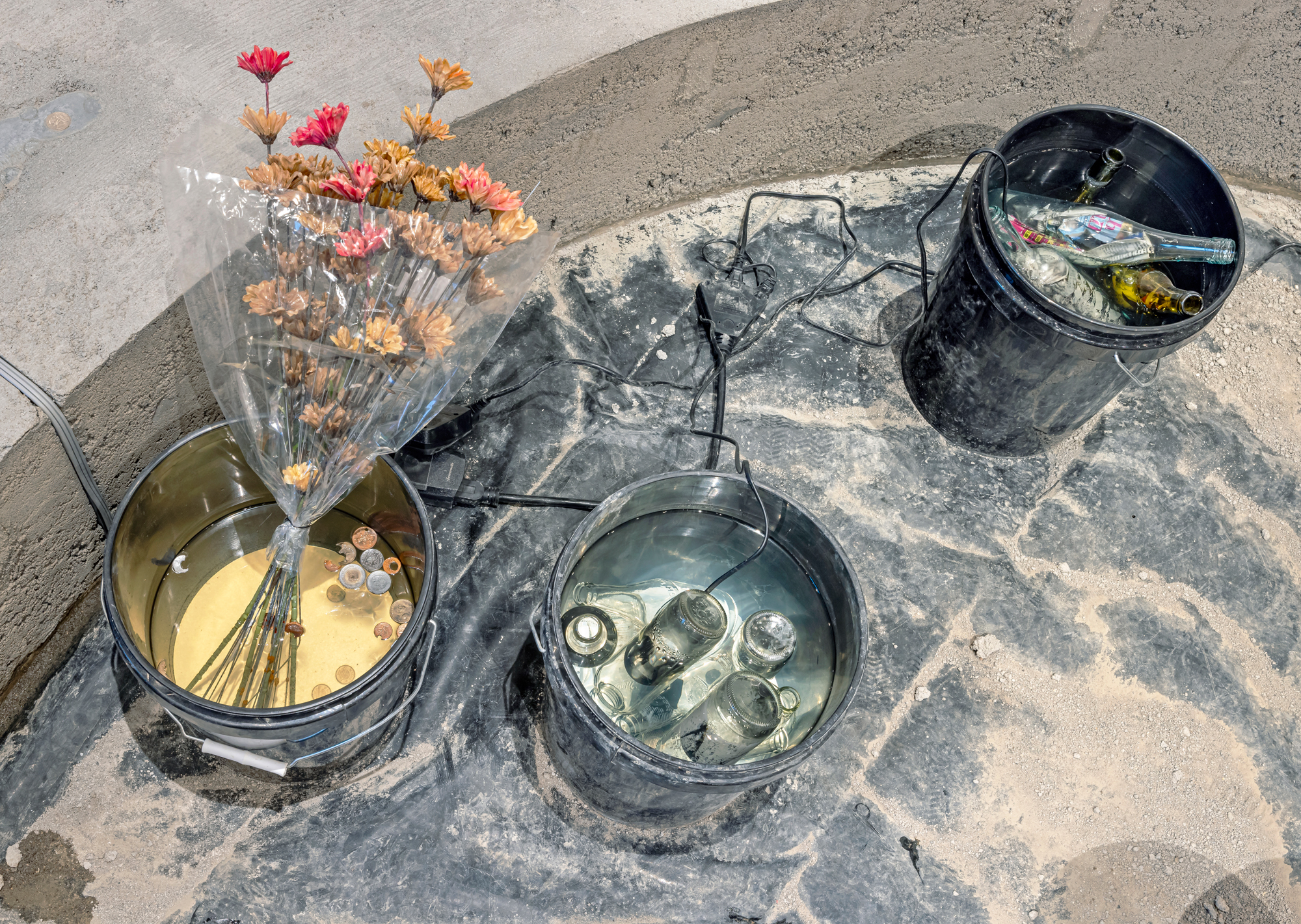
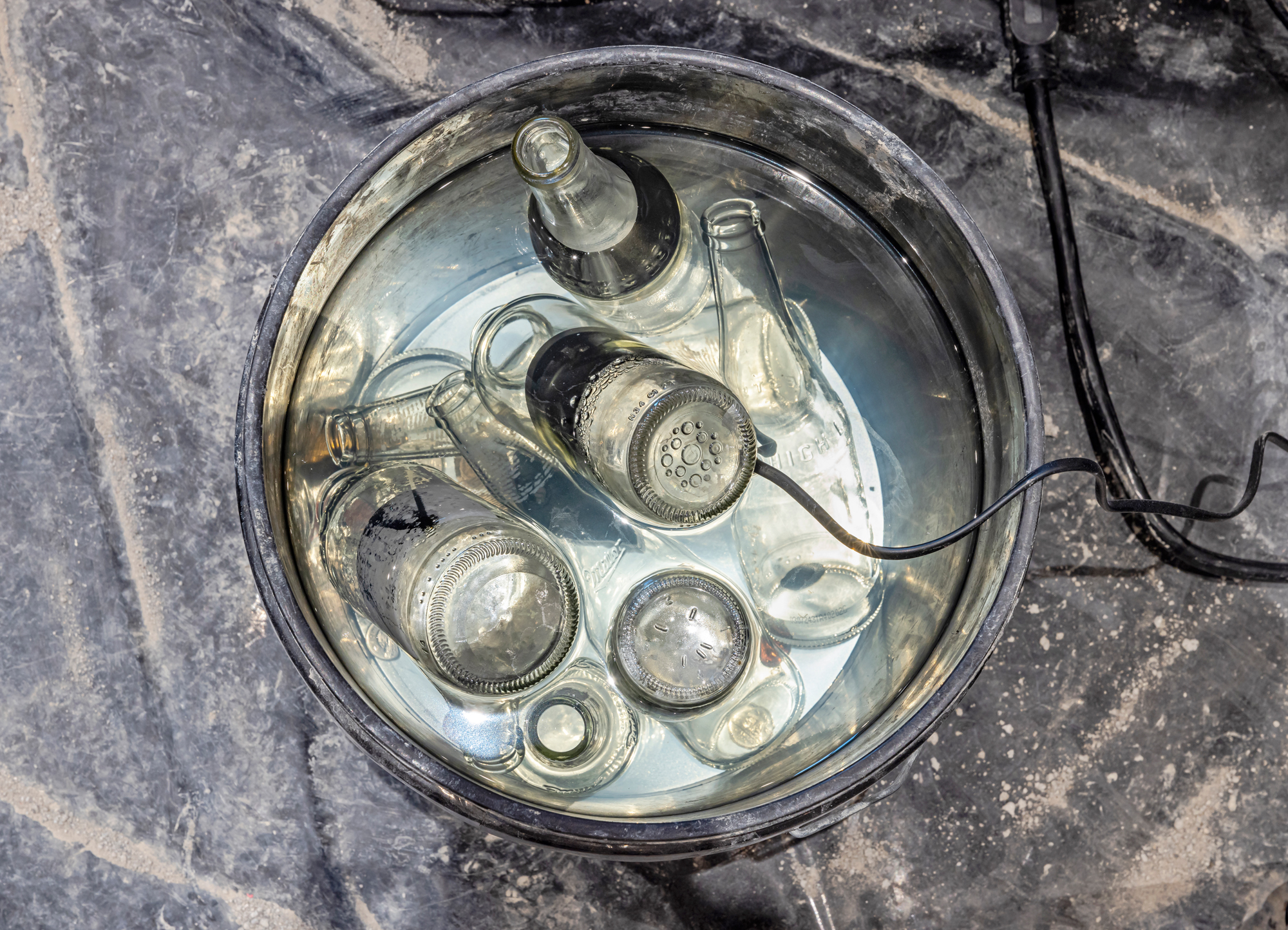
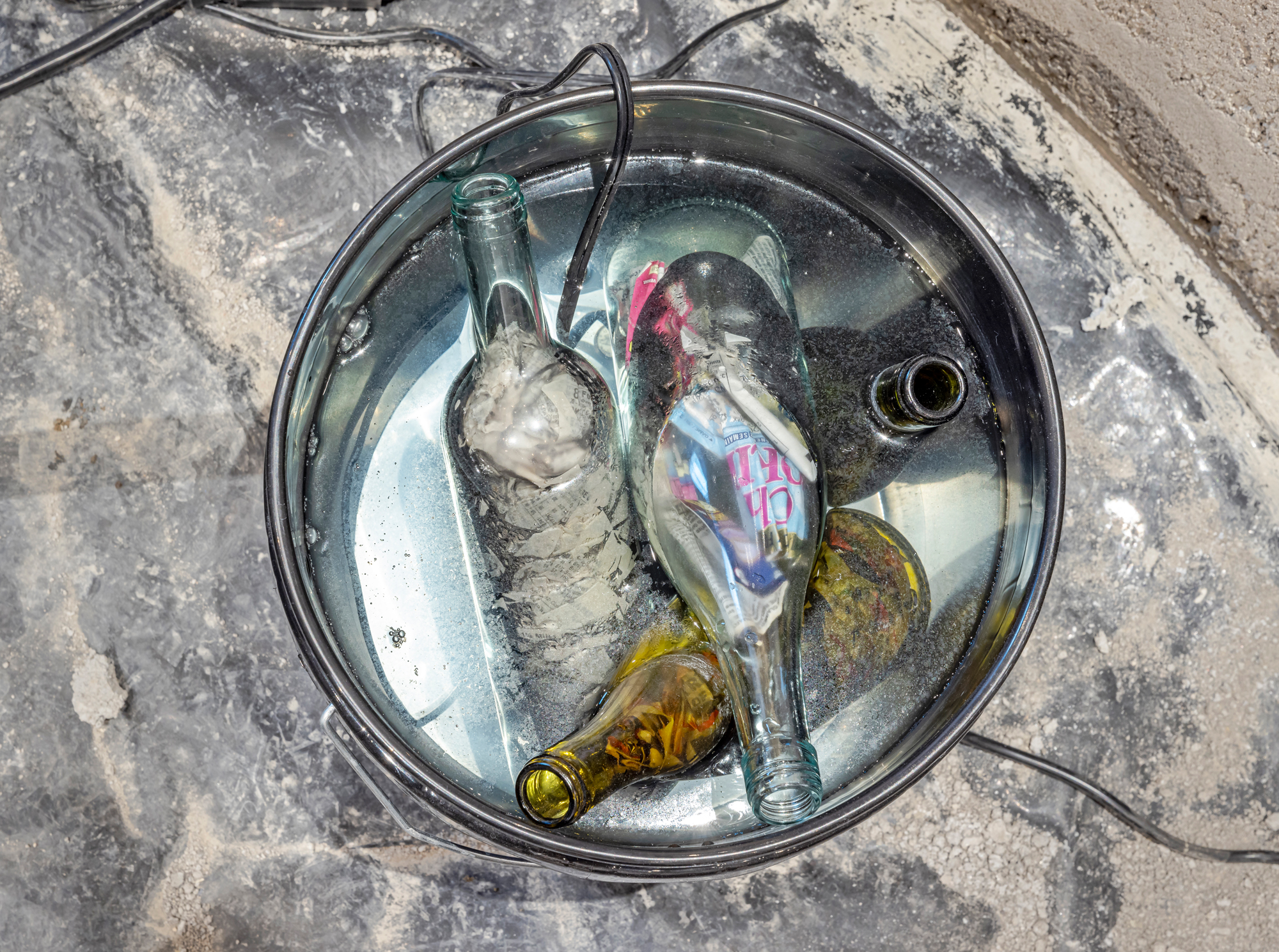

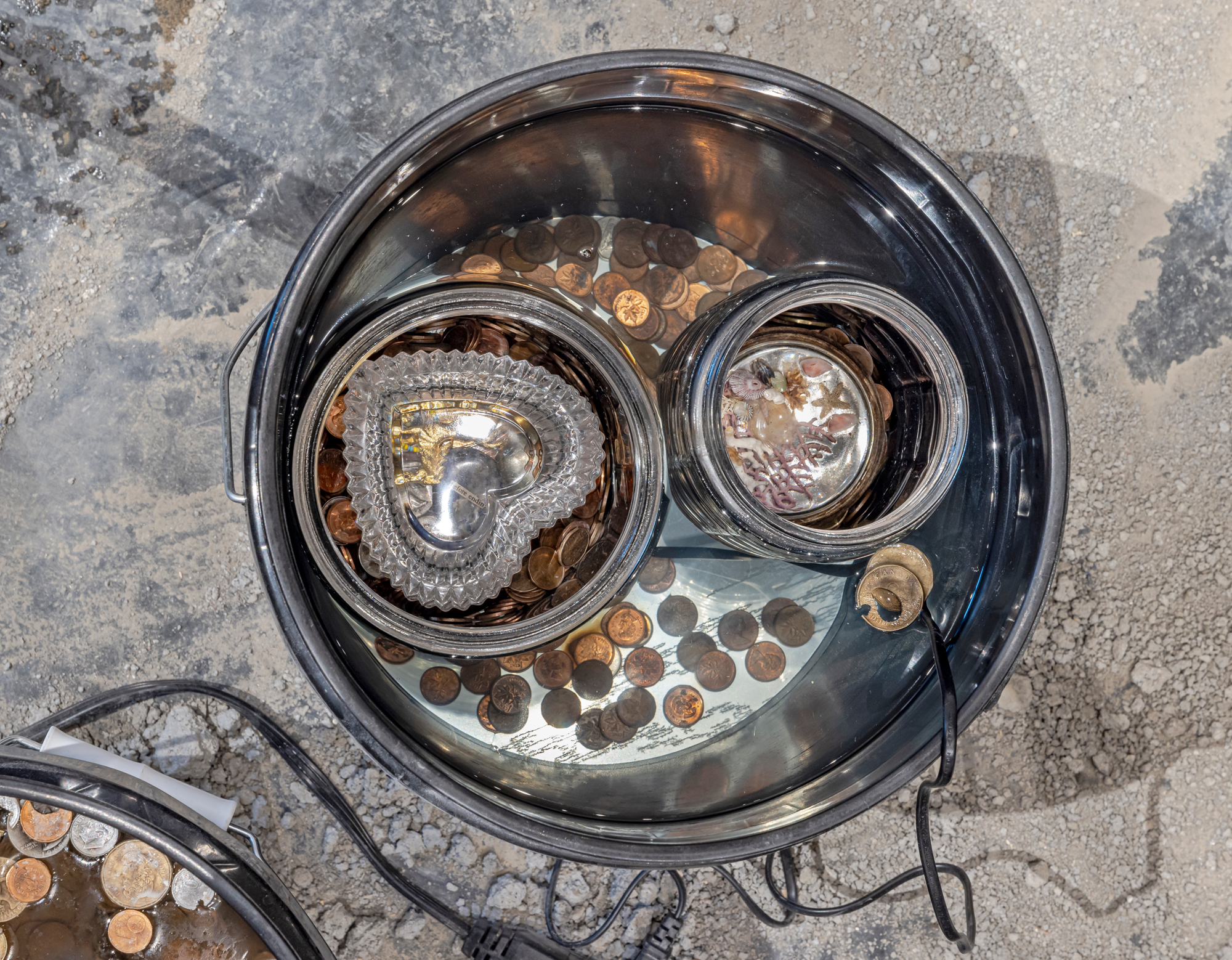
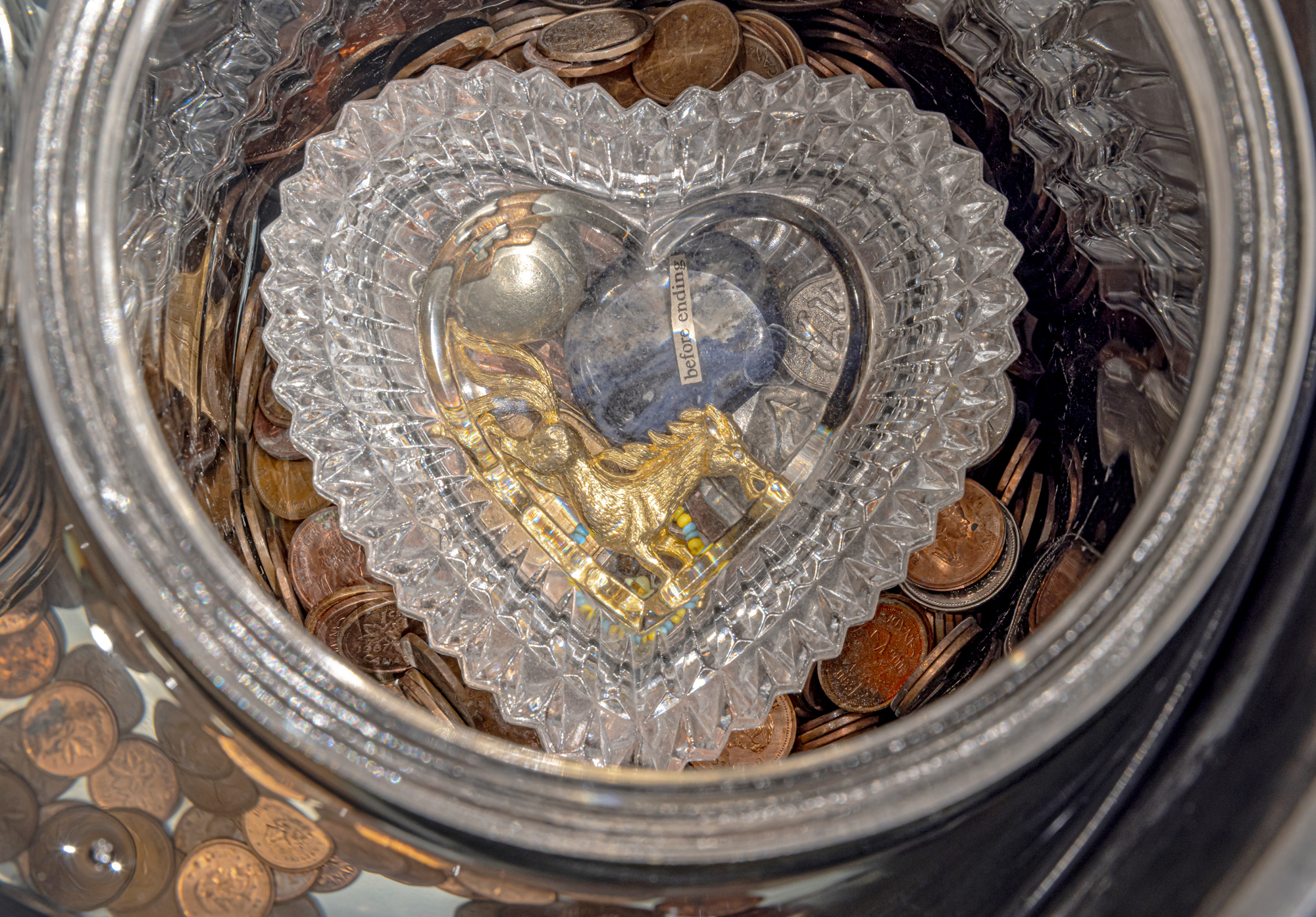
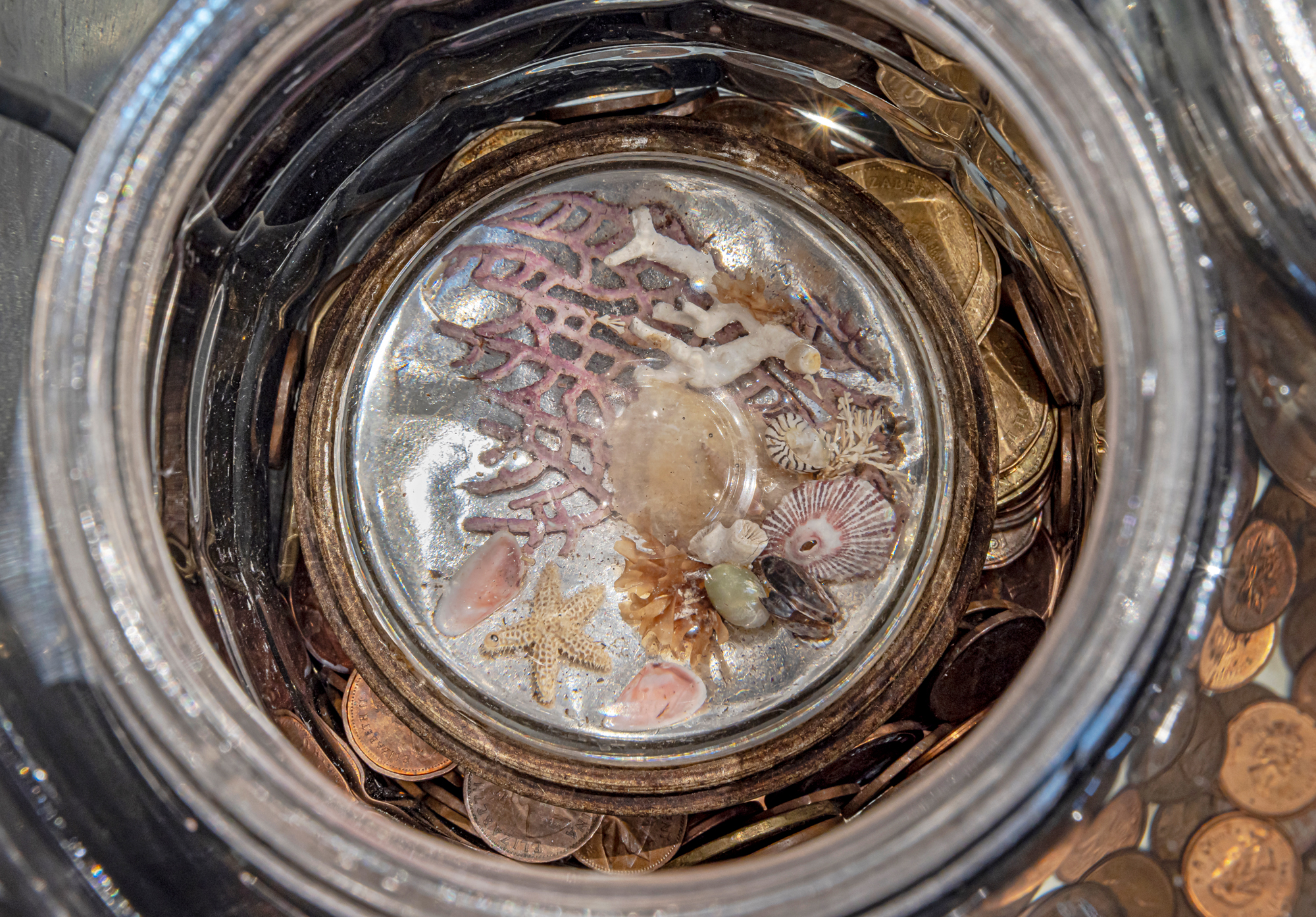
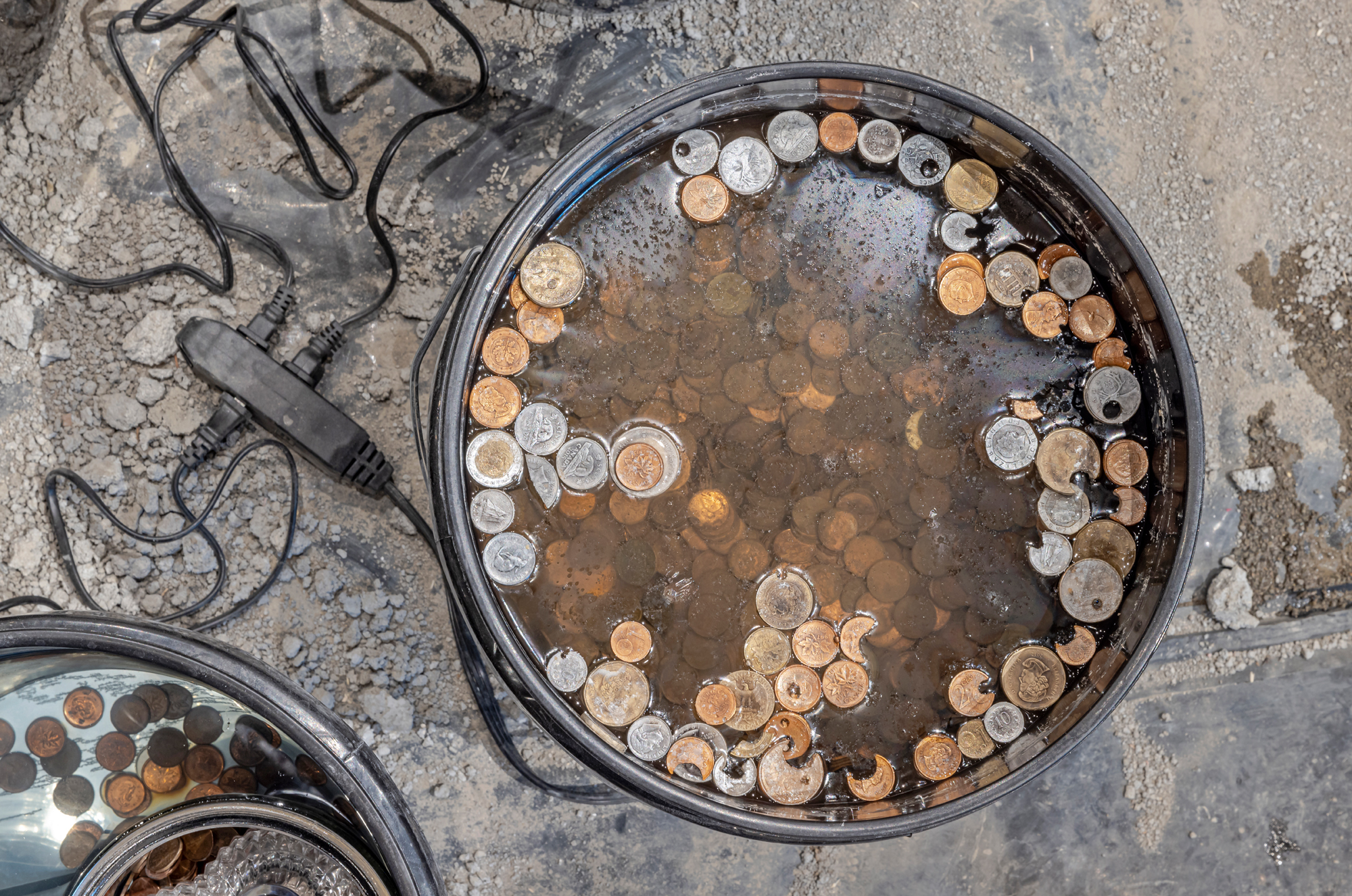
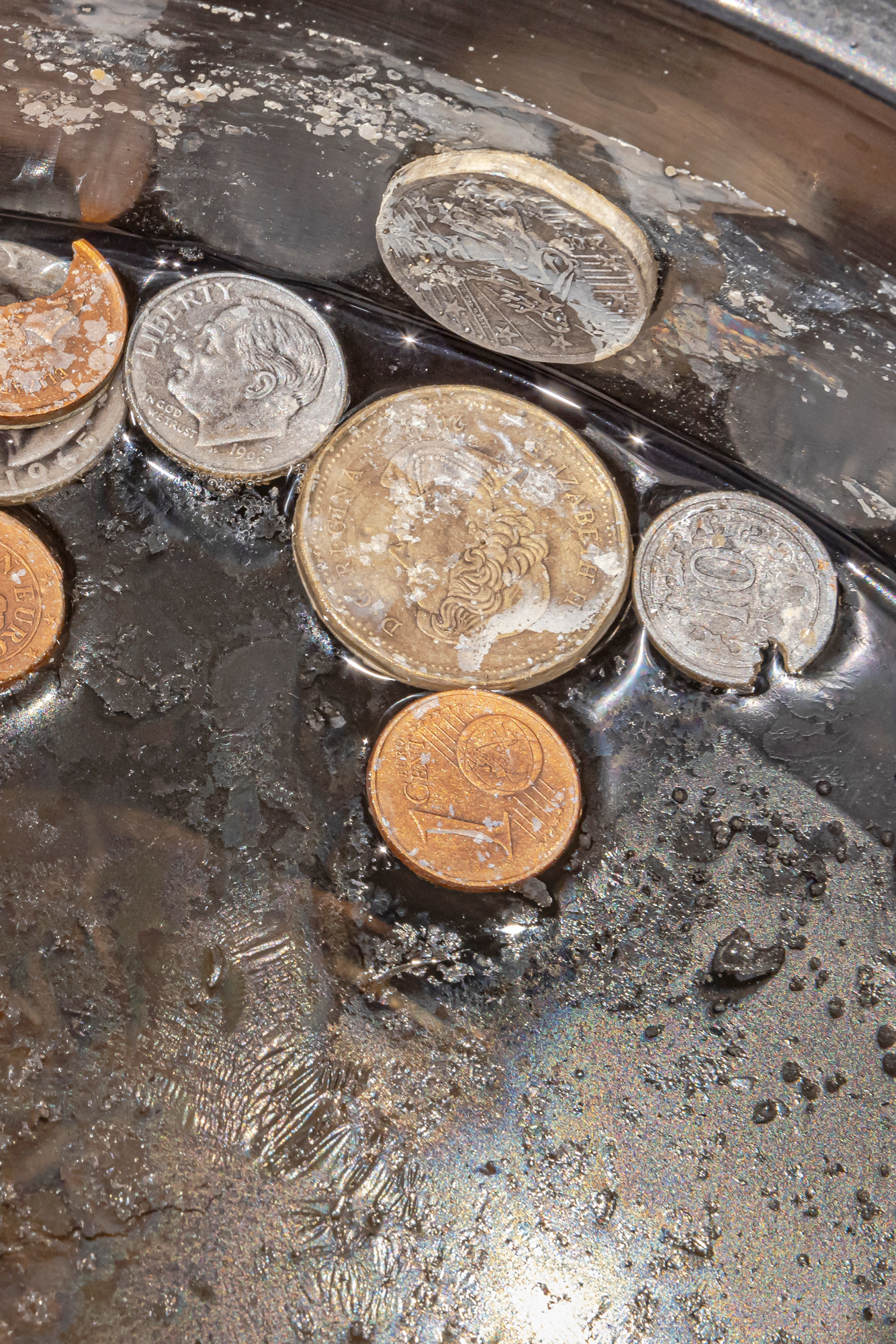
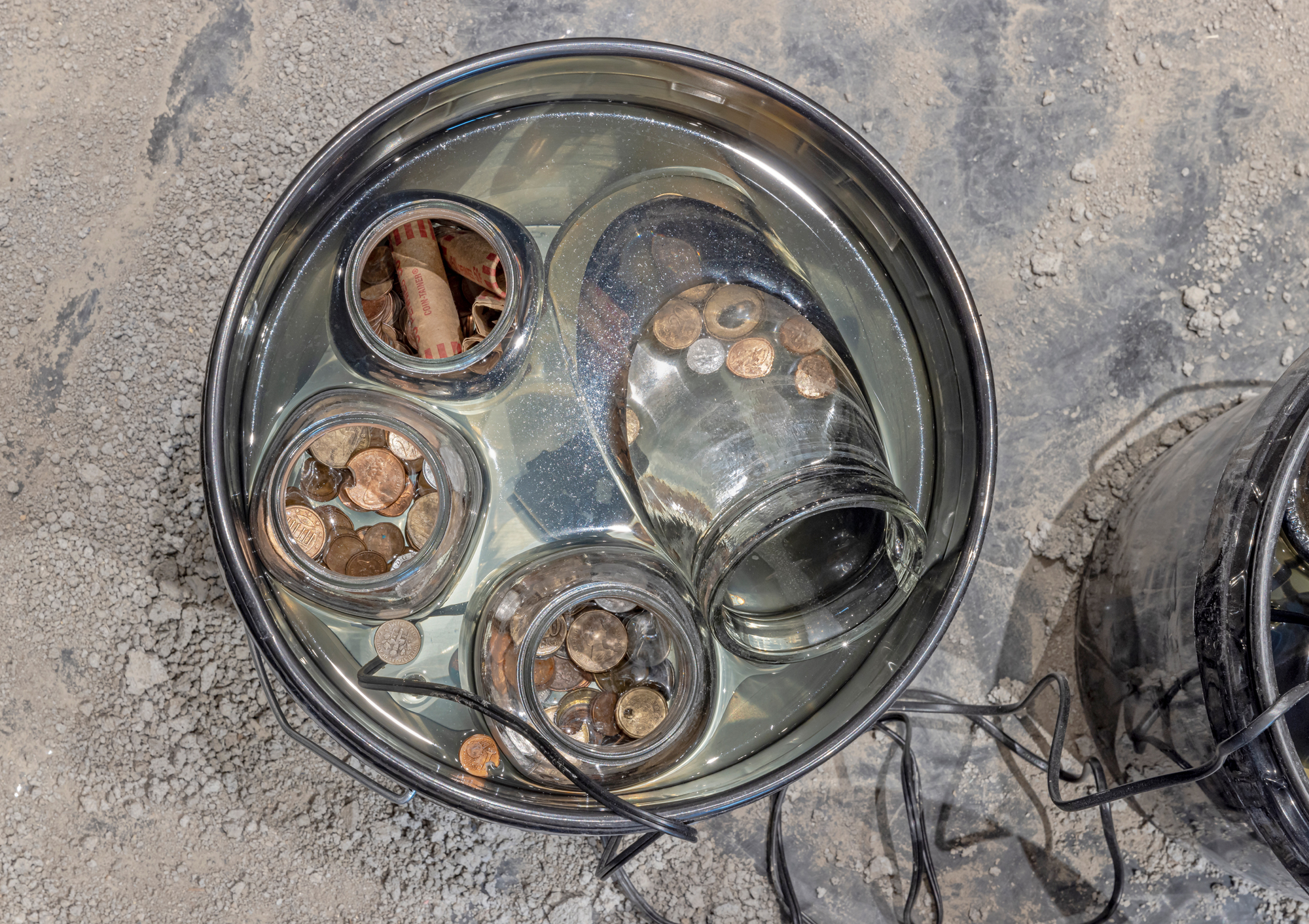
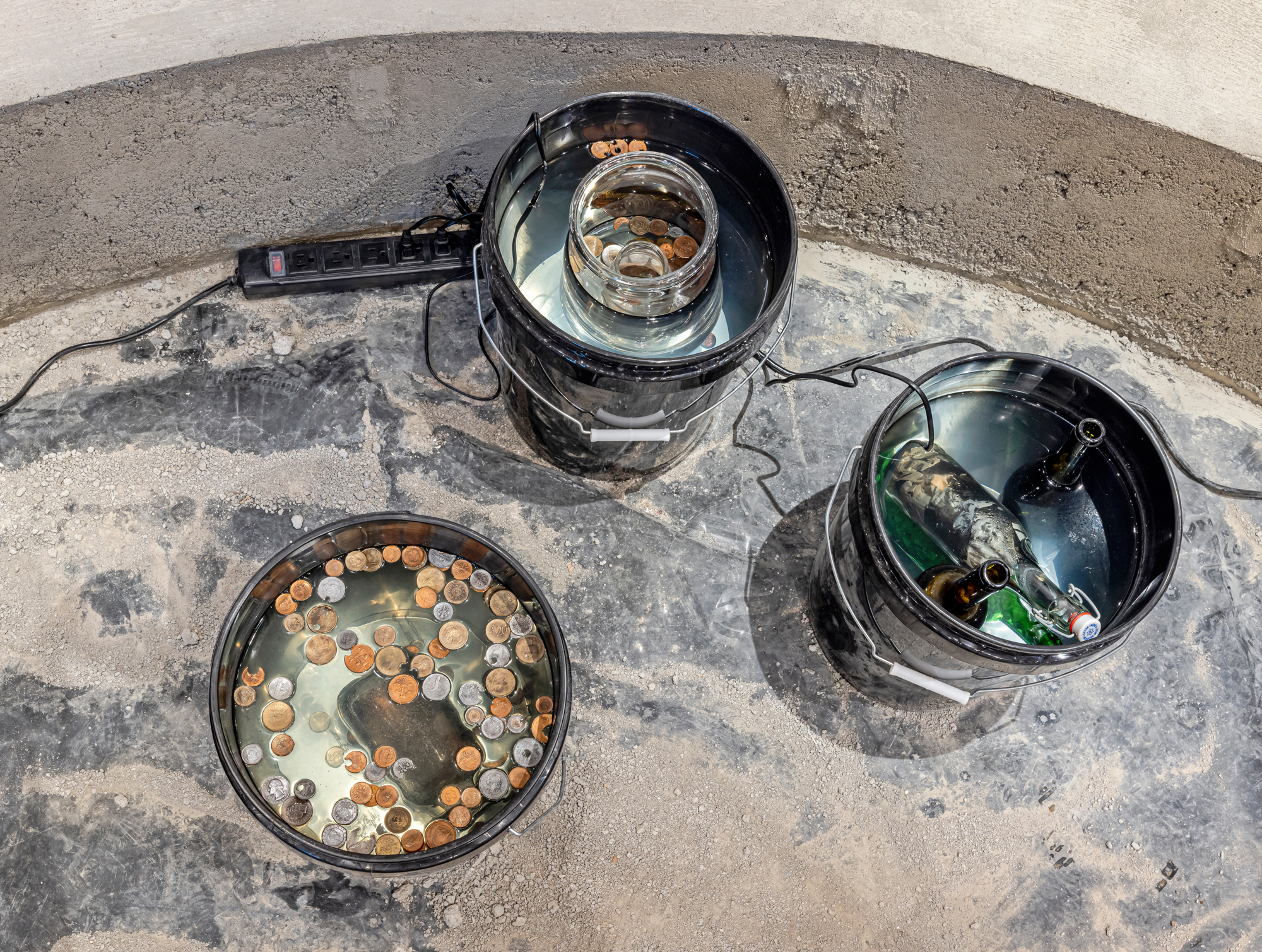
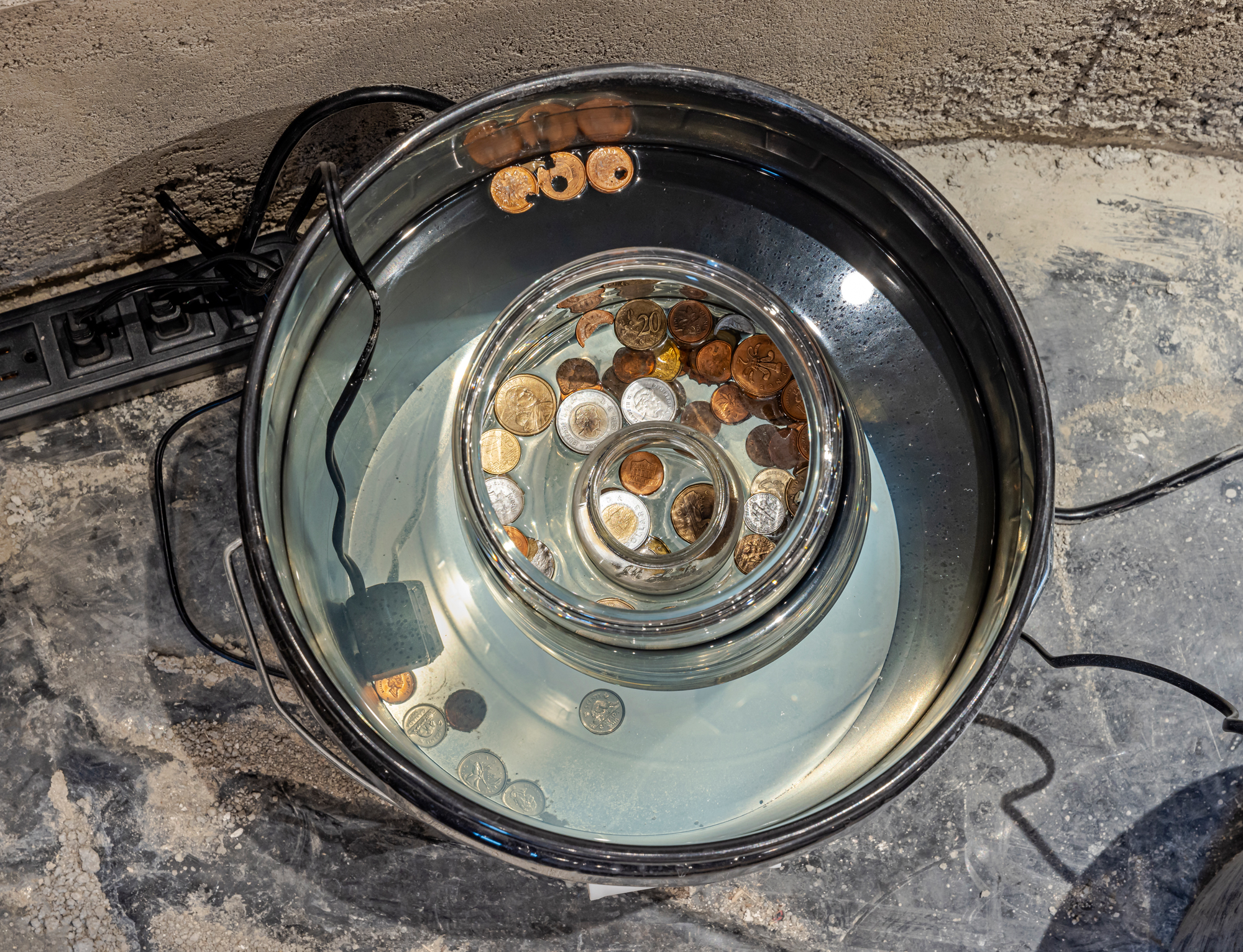
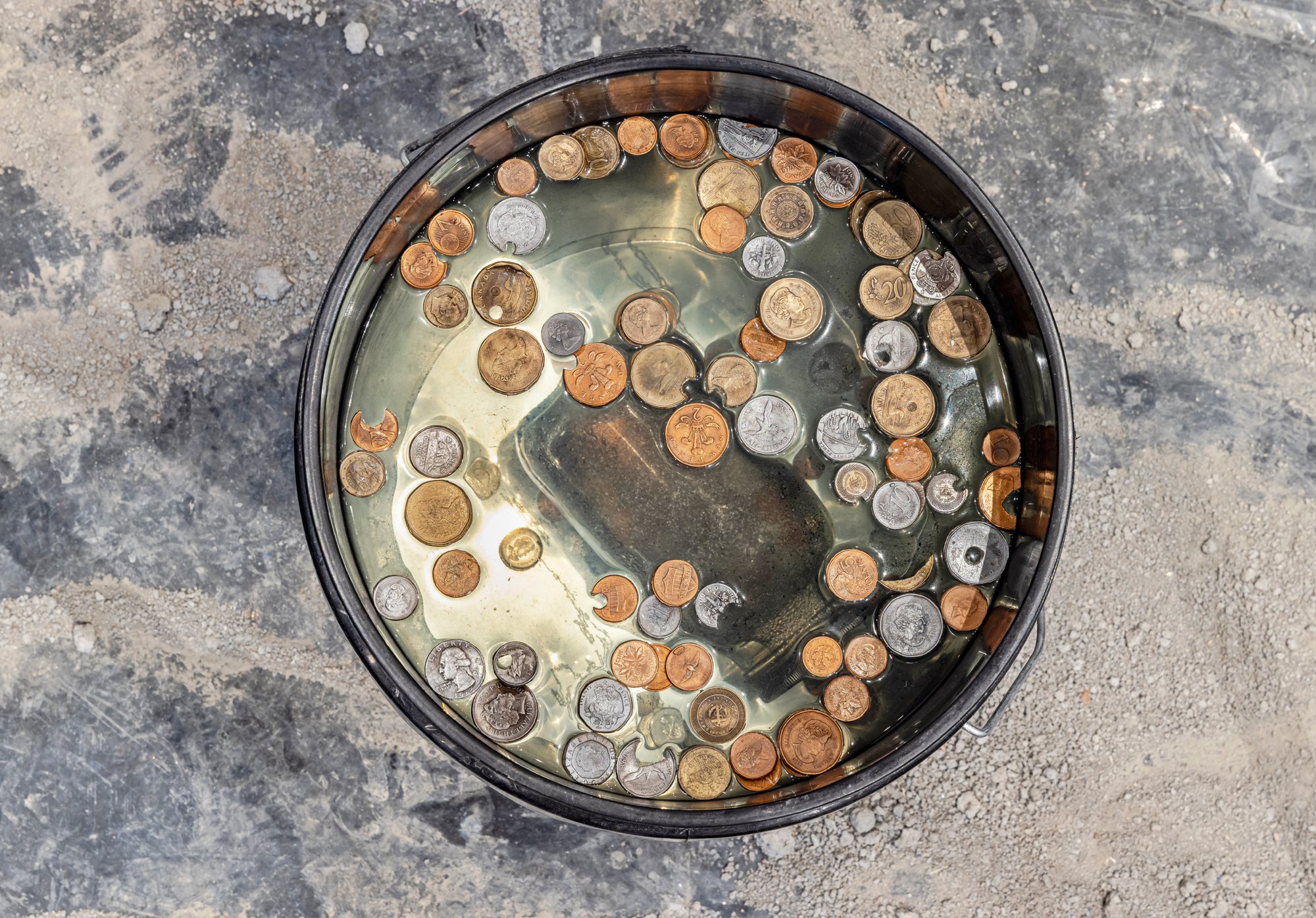
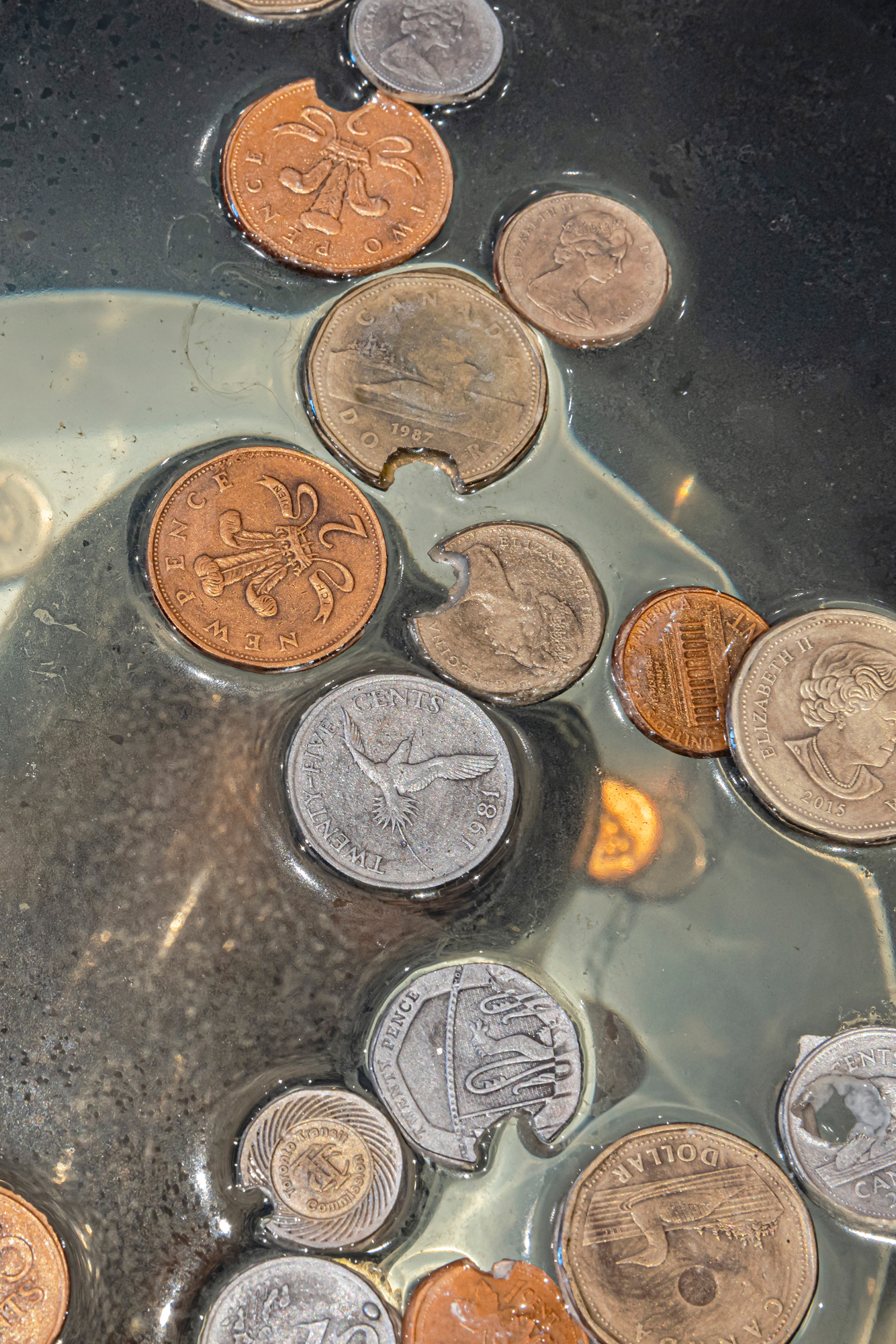
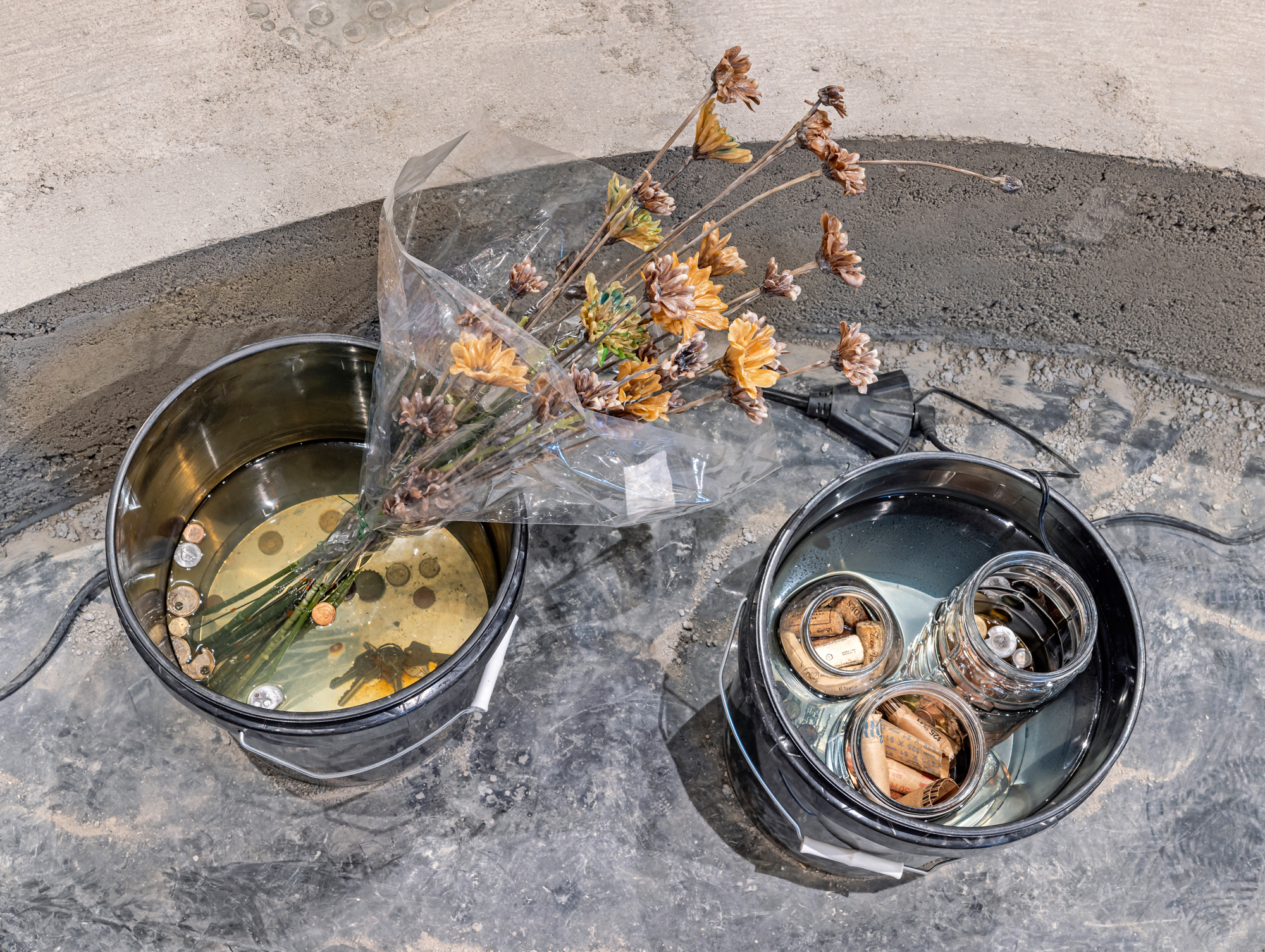
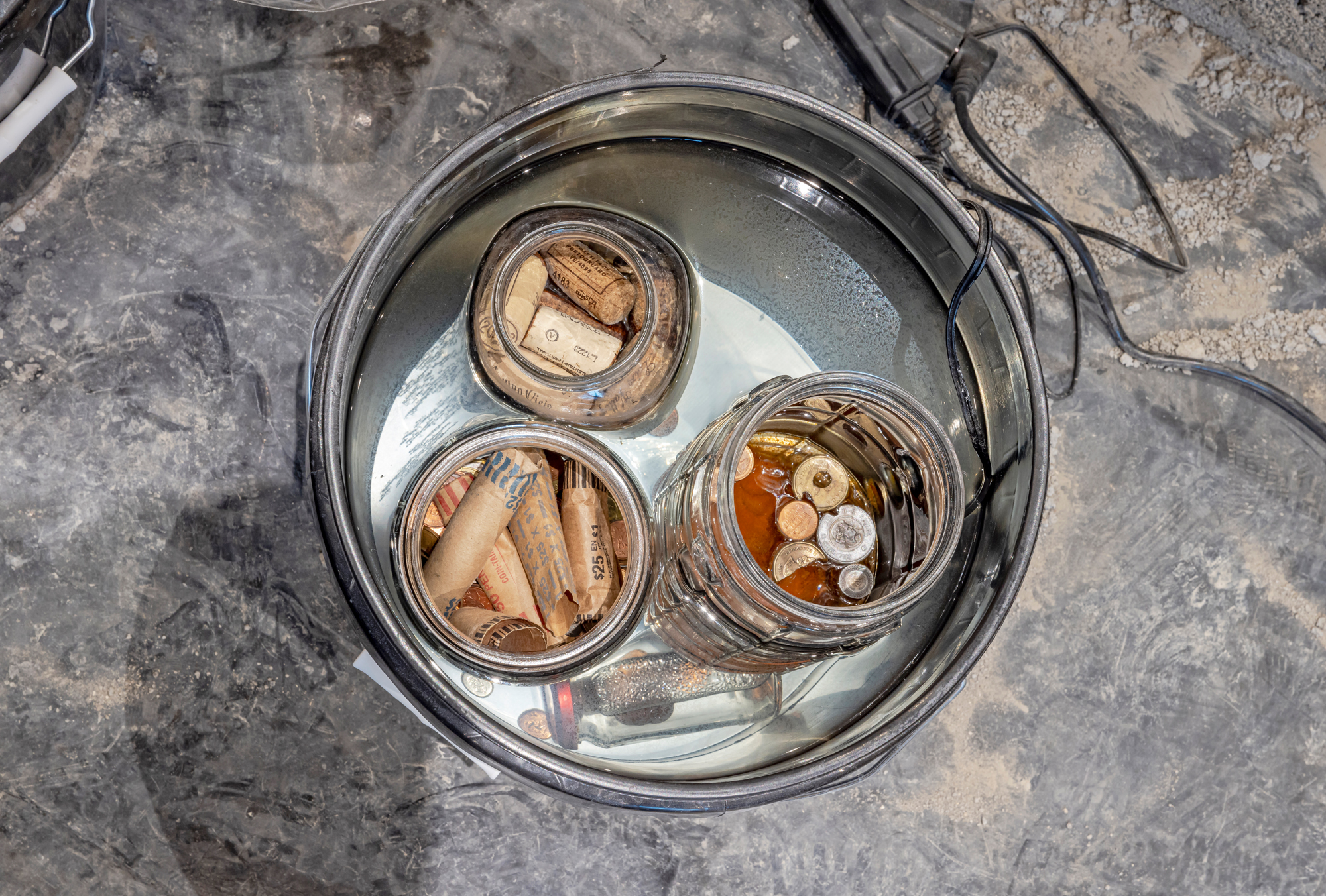
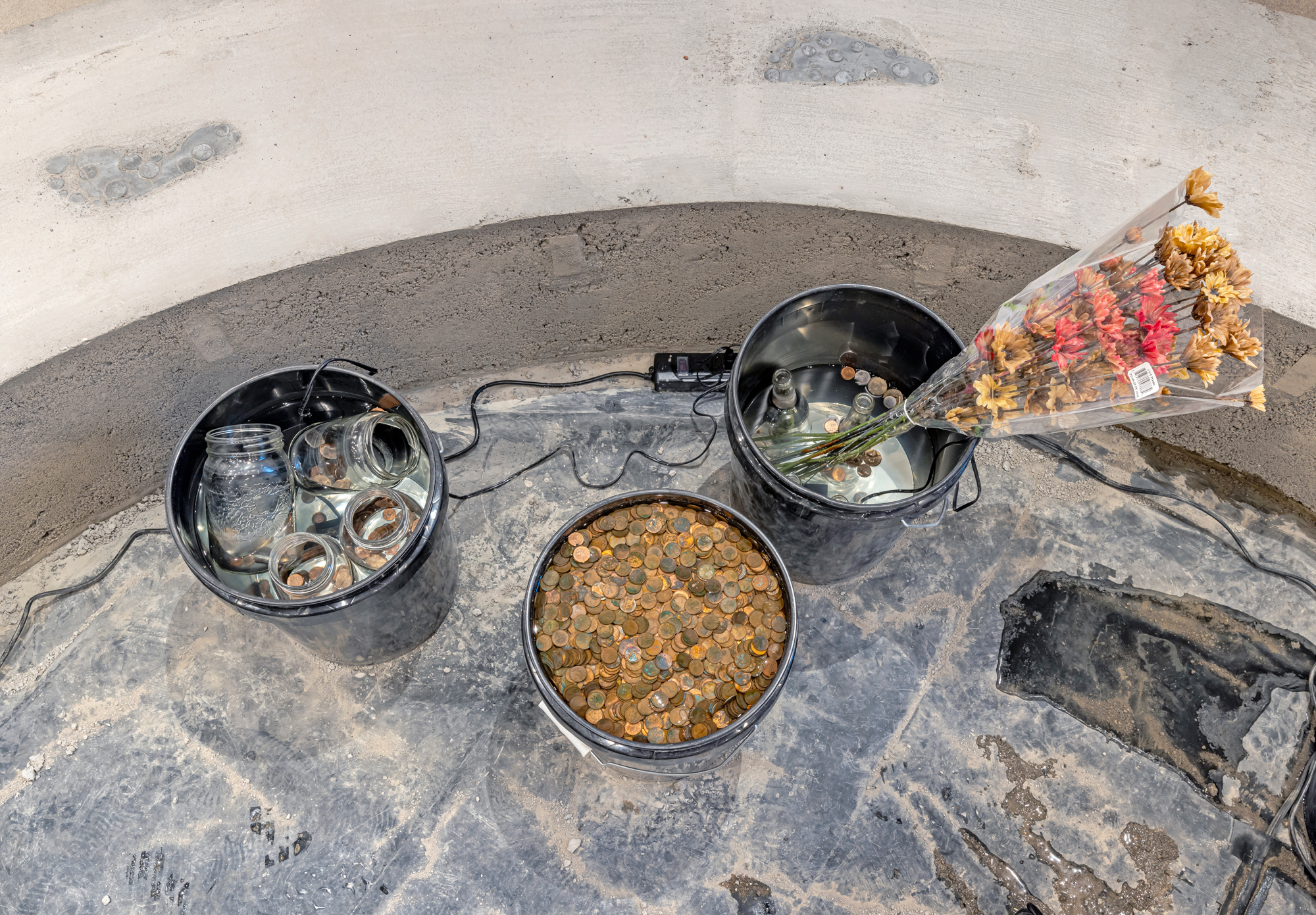
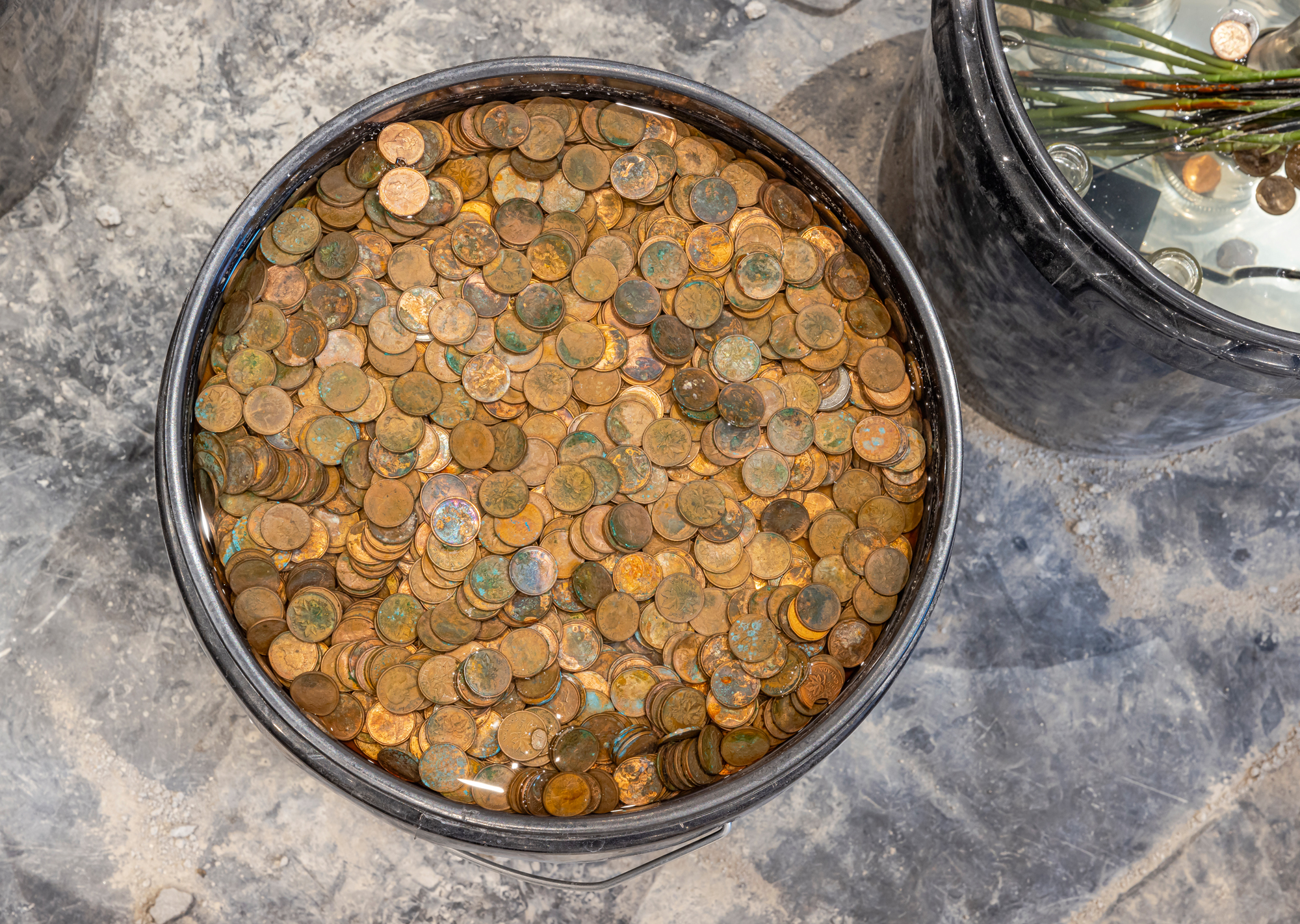
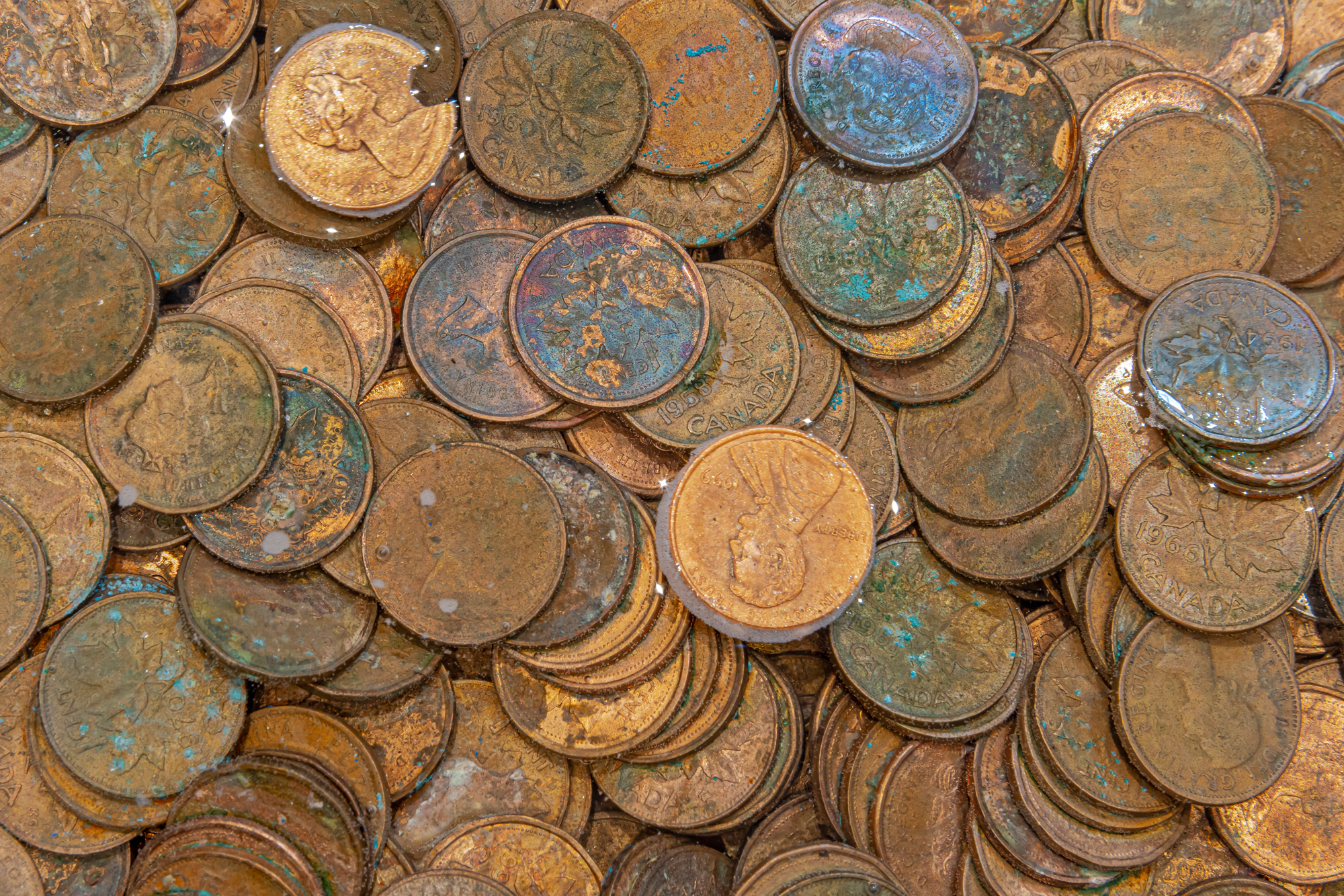
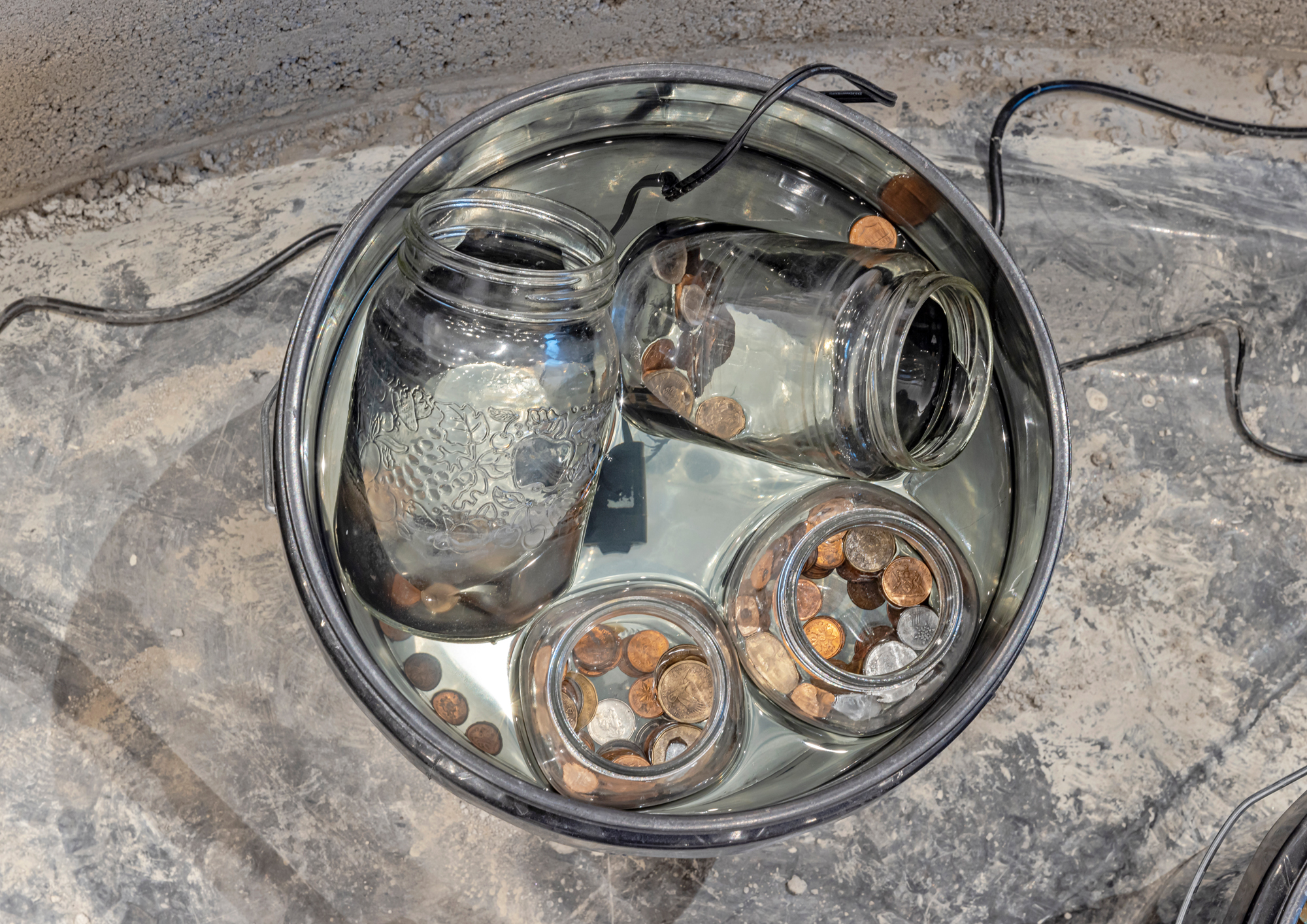
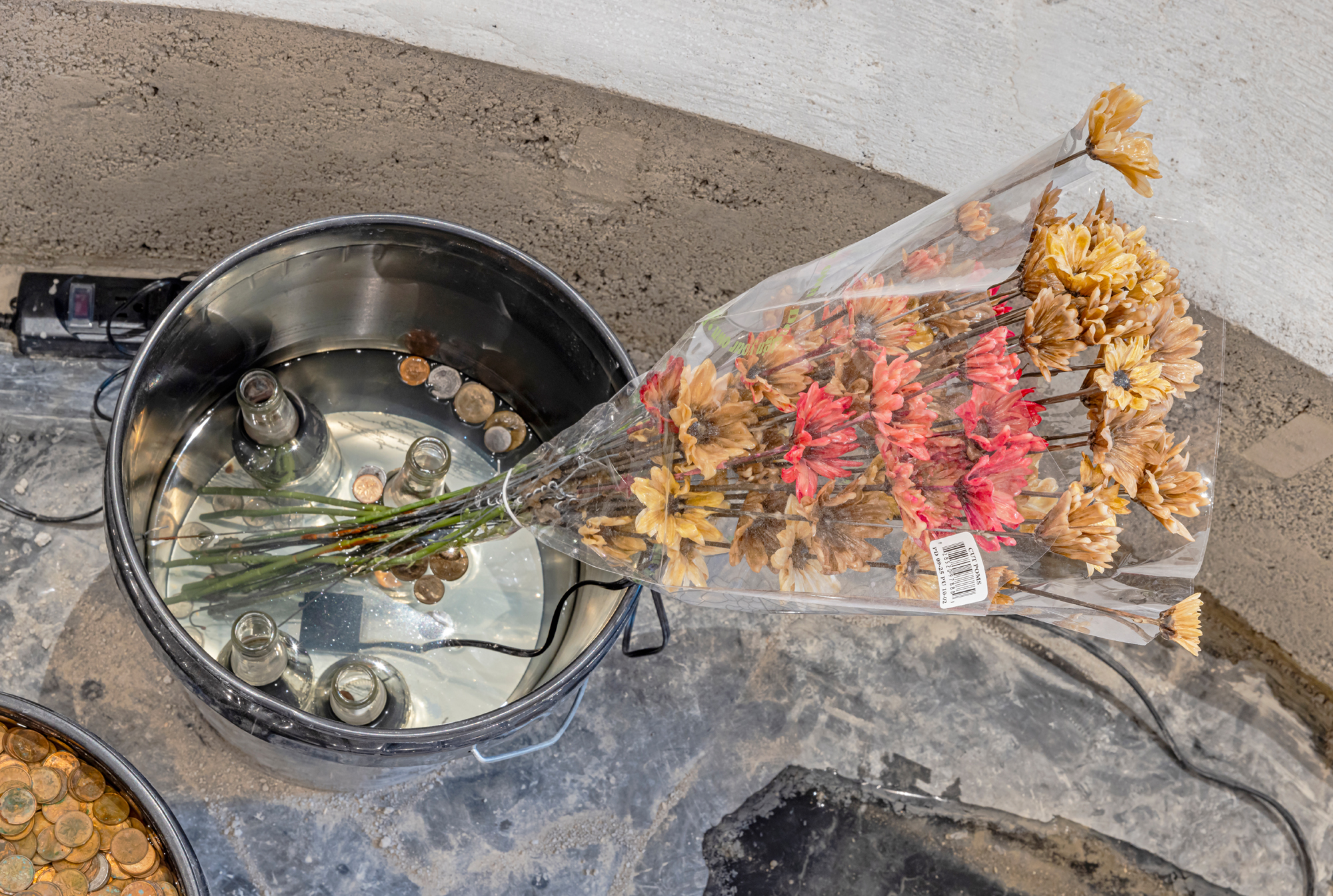
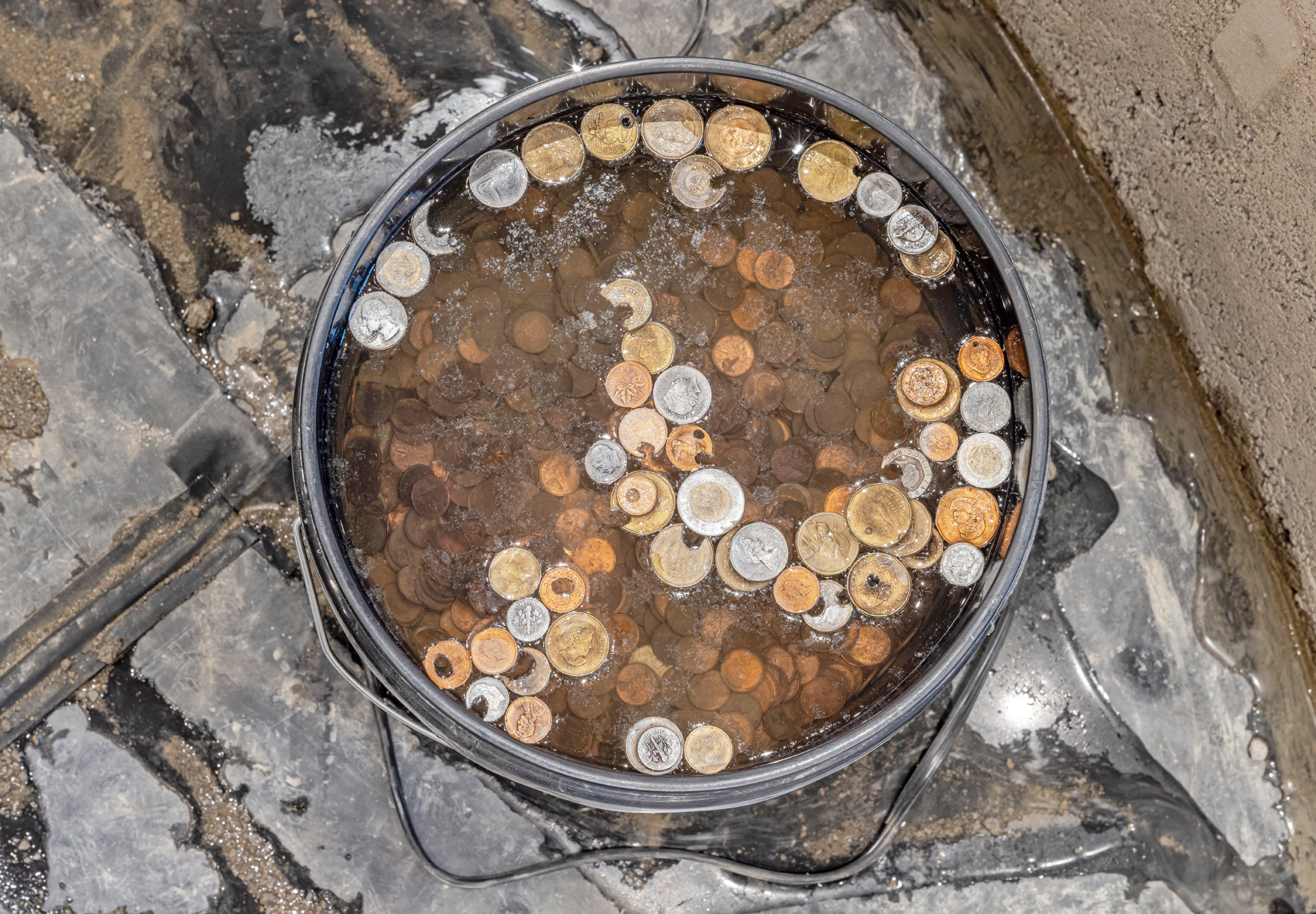
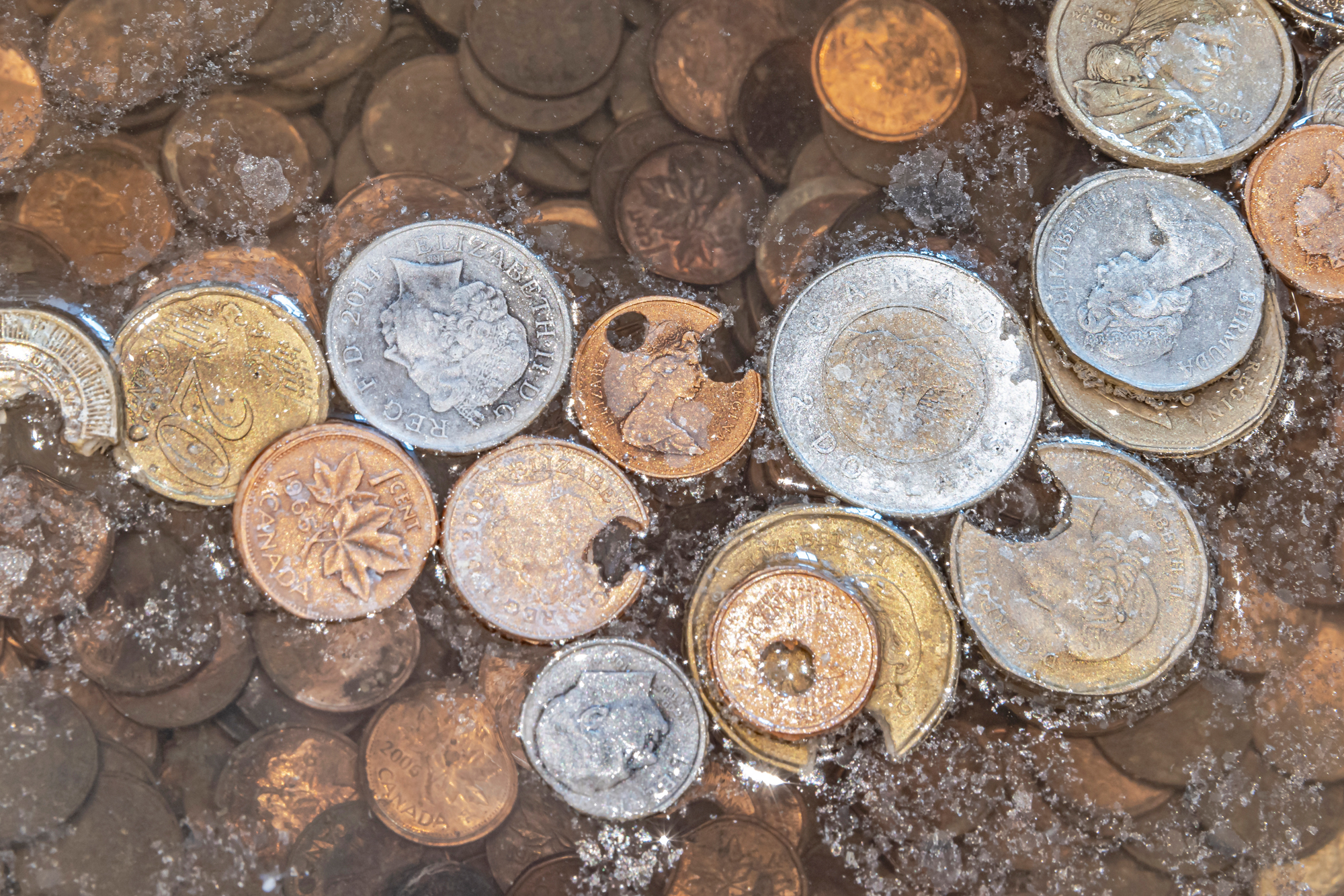
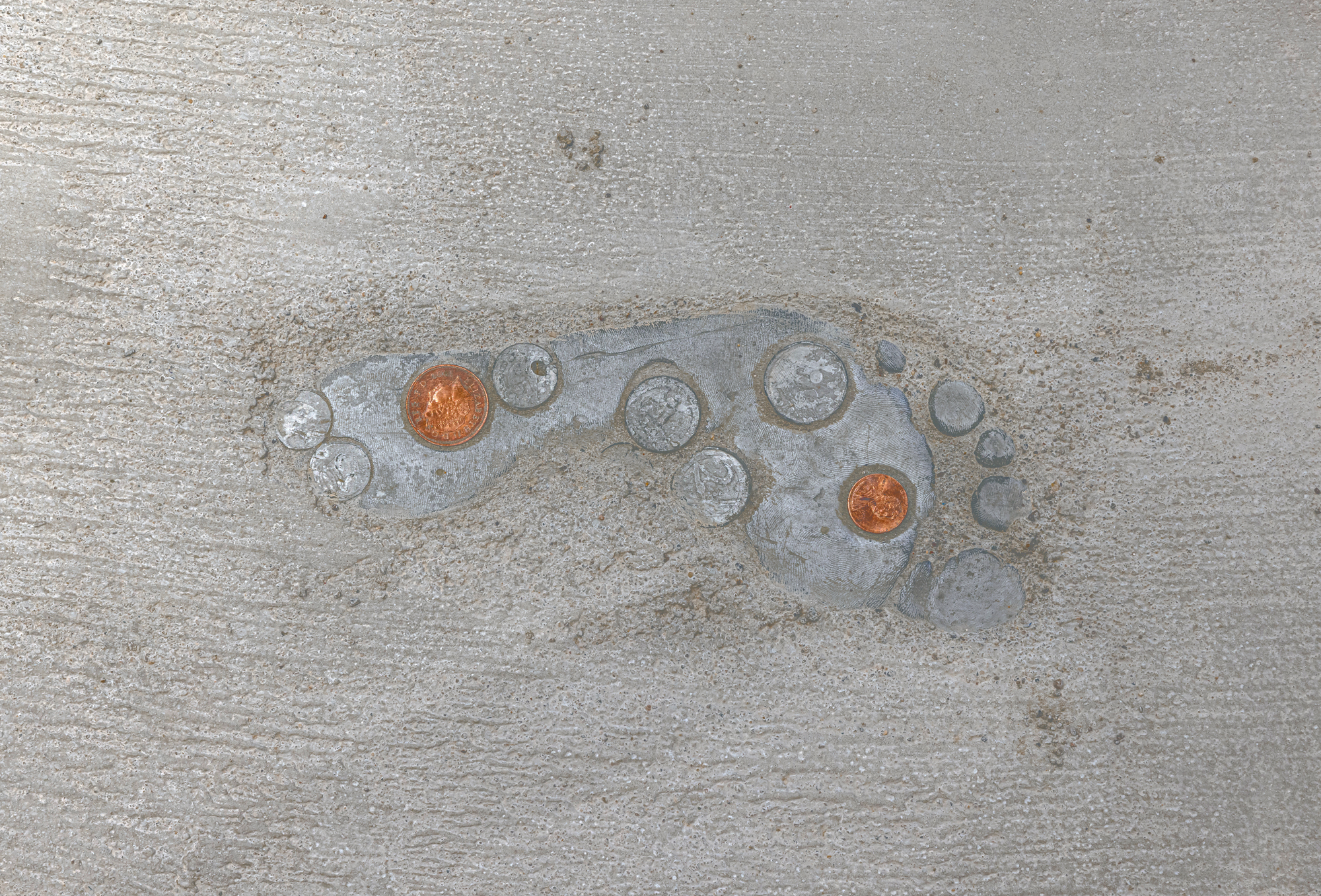
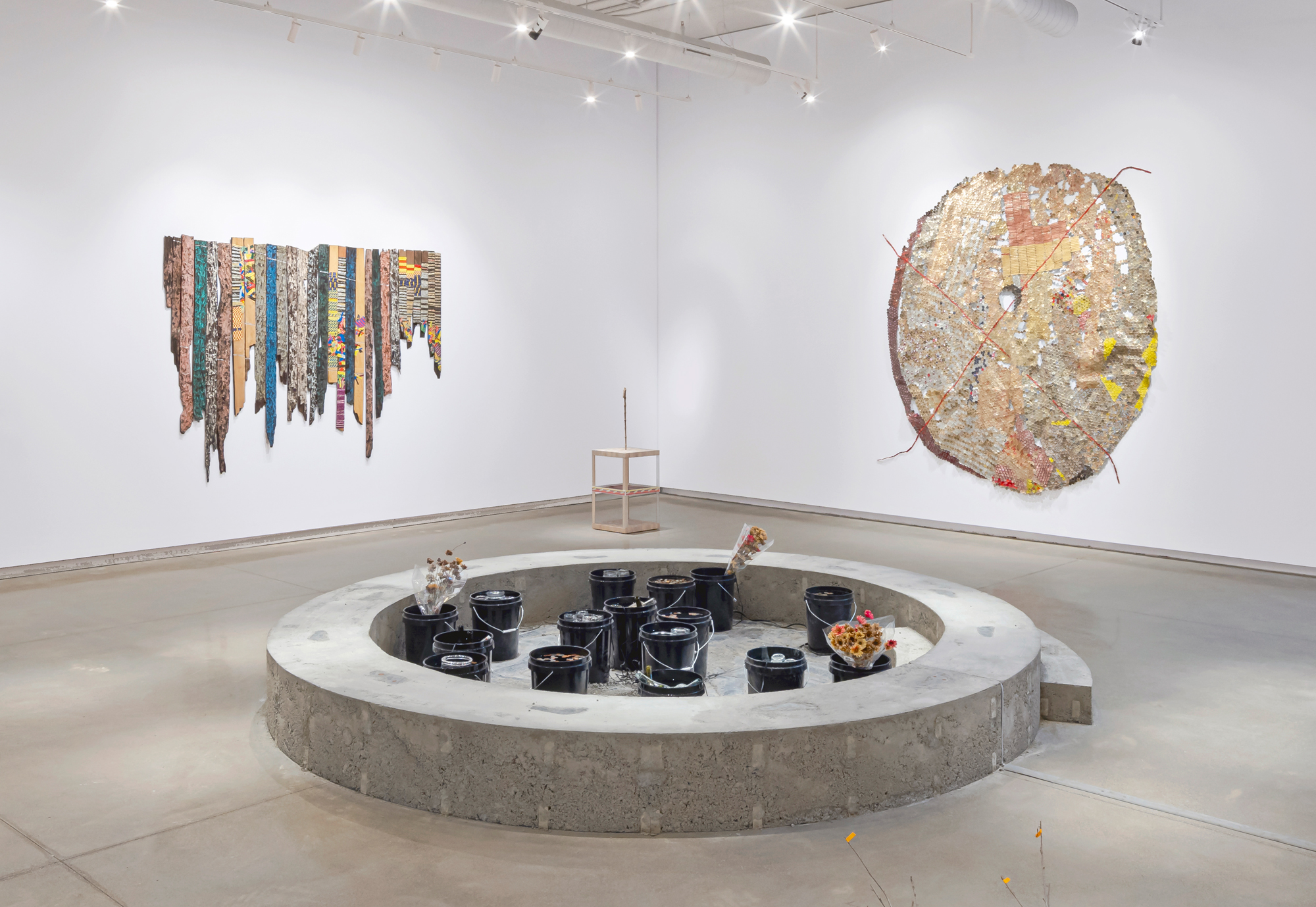
Manual Assembly: Fragments of a Whole
Group exhibition at The Goldfarb Art Gallery, York University, Toronto CA
November 14 - December 21, 2024
El Anatsui, Kevin Beasley, Wally Dion, Anthony Douglas Cooper, Jeneen Frei Njootli, Gabrielle L’Hirondelle Hill, Kelly Jazvac, Jenine Marsh, and Rosie Lee Tompkins
Curated by Jenifer Papararo and Lillian O'Brien Davis
Manual Assembly: Fragments of a Whole is a group exhibition, bringing together artists who use accumulation and assemblage as processes to create formal and aesthetic artworks that entwine material experimentation with personal experiences, economic histories, and ecological impact. The artworks in the exhibition are gatherings of assorted elements—from the discards of daily consumption to collections of precious materials, both natural and fabricated. The exhibition is a reflection of how “wholes” are constructed—a whole being an art object, an art installation, an art practice, an identity, an exhibition.
The gathering and re-circulation of materials, such as old clothing, coins, and repurposed plastic scraps, are the basic elements for aesthetic contemplation and conduits for storytelling and identity building. The structure and techniques shaping the artworks merge with the material histories of their pieces becoming formal sites of introspection and signifiers of lived cultural experience. They illustrate how we define ourselves as individuals and within community. By exploring the material and cultural conditions that shape our identities, these artists give us insight into the minute impacts of the excesses of colonial and capitalist ideologies and, inversely, present acts of resistance, both overt and covert.
We have divided our curatorial conversation into four categories, proposing a loose framework to an artistic process and technique that is as boundless as the endless materials available to assemblage. We start with “gathering” as it is the beginning process of any artist drawn to the practice of assemblage before we move to the idea of “economy” to address where the collected objects and materials come from. And then, through “poetics,” we posit why do we collect from which we draw from the speculative nature of spirituality and ritual which we ground with “place” to signal both home and identity. While all the artworks inManual Assembly cross over these various categories, embodying multiple aspects of each, we use these divisions to replicate what we see as common threads interweaving this constellation of works.
Gathering
A significant theme throughout the works in the exhibition is the act of gathering, from methodical and systematic to meditative and obsessive. Gathering or collecting is often couched in ritual, redefining ordinary materials and circumstances, elevating them from prosaic usage to signifiers with both poetic and analytic meaning. Repurposed materials such as aluminum liquor bottle caps in the work of El Anatsui are both reified and representative as the artist forms them into massive abstract shapes. The scale and beauty of Anatsui’s works are essential to their meaning, drawing connections between colonialism and over-consumption, waste and the natural environment. The epic scale of Anatsui’s metal works allow him the surface area needed to create an expansive visual field of colourful abstract patterns and undulating shapes that are sublime in both beauty and angst. These grand artworks are magnificent in craft, scale, and appearance; they are also menacing in the profound accumulation of discarded materials and the labour needed for their assembly.
Scale is also essential to Anthony Douglas Cooper’s work presented as part of Manual Assembly, but it is almost in reverse as the artist composes small and minimal sculptures. Even though there is awe in the amount of objects Cooper collects, his assemblages are modest in principle—small, stacked sculptures made from cylindrical objects collected from the streets of Toronto. For over a decade, Cooper has been collecting discarded scraps in an ongoing passive collecting practice during his day-to-day routine. He collects bits of tubular plastic or metal pieces, their past uses often unidentifiable. Sorting is an essential part of his process as the assembly of each sculpture is dictated by how it fits into the next object. Scale is again inverted and comes into play as the miniature sculptures are always installed, arranged, and exhibited en masse.
How we consume is central to the concerns of many of the artists in the exhibition, but it is overt in the work of Kelly Jazvac, who focuses on the damages of excessive plastic consumption. Her materials are sourced from reconstituted objects, utilizing reprocessed or recycled materials, often vinyl advertising banners, in combination with other materials to create formal gestures that appear improvisational and immediate in their composition and combination. The seeming spontaneity of her sculptural process is posed and crafted with an intentionality and balance that creates tension between the permanency of the plastic base of her materials and her artistic interventions.
Economy
Indigenous communities have historically used tobacco within their economies. Before colonization, tobacco was one of the most widely exchanged materials in the Americas; in Indigenous communities, it is still shared today as part of reciprocal economies—for example, as gifts and offerings, for ceremonies, and as medicine. Gabrielle L’Hirondelle Hill, whose interest in tobacco explores the exploitative circulation of raw resources under capitalism in contrast to frameworks that privilege respectful and reciprocal relationships. For Manual Assembly, we include Hill’s tobacco flags and a selection of her spell drawings. The flags are both celebration and critique, reflecting the importance of tobacco in Indigenous history while exposing its colonial appropriation and exploitation for economic trade. The spell drawings also incorporate tobacco, with the paper used for each of the drawings having been repeatedly coated in tobacco-infused Crisco oil. On this saturated paper, Hill creates collages from materials she collects from her day-to-day life, from wildflowers to beer tabs.
For Manual Assembly, Jenine Marsh constructs a gathering space at the center of the gallery. Adorned with a collection of real and forged coins, preserved flowers, plastic buckets, and flowing water, Marsh’s provisional concrete sculpture references the common yet complex civic structure of the fountain. Here, the fountain is examined as a space which facilitates an interaction of infrastructure and architecture, of value and exchange, and of basic needs and unrealized desires. The fountain continually unfolds as an urban source of clean water; as an essential hub for social interaction, gossip, and rallying; and as a site for the enactment of an alternative economy found in the act of throwing coins to make wishes.Joining the tangible and intangible, Marsh’s installation situates the utopic as a process of constructing alternative futures from the material world of the present.
Poetics
Influenced by the tradition style of the Star Blanket common in Indigenous communities, Wally Dion uses scraps of fabric as conduits to collect beliefs and prayers related to Indigenous identity and spirituality. Dion is interested in quilting as a tradition specifically within Indigenous cultures where quilts are gifted to mark a birth or death in a family and to bring prosperity and protection. Dion’s reinterpretation of traditional quilting practices imbues the repurposed scraps with customary significance, reanimating them within a practice of community gift-giving. Often, Dion uses translucent materials, giving the blankets a delicate and otherworldly quality that makes them simultaneously visible and liminal. Their translucency creates a threshold, an opening and entry point into other dimensions, histories, and perspectives. Rosie Lee Tompkins’ improvisational quilting practice captures a record not only of the artist’s life through the detailing of embroidered names, birthdays, and, sometimes, bible verses into many of her quilts but also her wider political and environmental context. Influenced by traditional African textiles, Tompkins’ quilts share a perspective on Black life through the lens of the feminine and the domestic. The spiritual is key to Tompkins’ work, as she regularly acknowledges God as her influence in the creation and structuring of her intuitive quilting patterns. Through gathering and amalgamating scraps of fabric, Tompkins uses her quilting practice as a diary and a devotional, reflecting the power of her religious beliefs that inform how she experienced the world.
Place
Kevin Beasley’s resin sculptures feature raw cotton and old clothing which he often sources from his family, connecting his work to the site of home and highlighting the objects and materials used to create personal identities. For instance, a house dress or pair of sneakers are conduits of memory for the wearer, such as a gift received or a remembered embrace from a beloved family member. In addition to preserving personal memory, Beasley’s use of cotton simultaneously explores the impact of the cotton and textile industries, and other cycles of commerce, that perpetuate inequity. There is an inextricable link between the cotton-farming legacy of the land in Virginia where his family is based and the clothing items that define their identities and shape their lives.
Like Beasley, Jeneen Frei Njootli’s incorporation and preservation of used clothing, worn by relationships to land and labour, offers a visual memory of the wearer as well as defines what it means to live remotely, tied to the land. In particular, Frei Njootli’s resin-coated gloves presented in Manual Assembly represent liberatory practices undertaken within her community. Through the singularity of a glove separated from its pair, the artist captures the complexity and bliss of sustaining oneself on the land through hunting and gathering as well the importance of preserving communal and traditional practices of beading and tanning hides for the expression of identity.
The curatorial process is also an accumulation and assembly of materials and processes and for Manual Assembly closely characterized by our four categories. For this exhibition, we were inspired by Lori Blondeau’s adjacent exhibition which began with the gathering of stones from beneath the ground of our new building, the collection of material being the basis for the construction of both form and meaning. For us, this accumulation is extended and exemplified in two works in the exhibition. In Frei Njootli’s Fighting for the Title Not to Be Pending, 2020, there is a shift in the process of assemblage as it leaves behind the very material it is made from. The artist has measured her body weight in small glass beads, scattering them throughout the gallery building and grounds: between concrete slabs, in corners, and in crevasses. By the material nature of the beads—their round, smooth lightness—they shift, rolling with the vibration or pressure of a footstep or the air flow caused by the opening of a door or the force of the wind. Our movements with the elements embed a portion of the artwork into the building’s cracks and into the earth of the gallery grounds as remainder. Meanwhile, Marsh offers a place for visitors to leave their desires and their coins. Her sculpture is as viable as any fountain-cum-wishing well to materialize one’s dreams and expose the ephemerality of capital accumulation. The residual debris of the beads and collections of coins offers an active and live exchange that embodies the making of assemblage that is defined by accumulation and redistribution as both process and critique. This accumulation and assemblage is also reflected in Abstract Legacies, an exhibition about the significance of the University’s art collection and the acquisition of art collections as a whole. It is a prompt we will use to think about art collecting as a practice into the future. These materials and objects are pieces that exist as partial elements of larger wholes; they are bits of meaning in and of themselves, but it is their transformation into formal artworks and wholes that makes them expressive and ideological propositions.
Fountain for the Thirteenth Hour, 2024
Concrete, wood, buckets, plastic pond liner, water, pumps, wiring, mixed-currency coins, resin, epoxy clay, powdered metallic pigment, acrylic varnish, flowers preserved with synthetic rubber, steel wire, plastic flower stems, plastic bouquet wraps, solder, glass jars, glass bottles, various newspapers, scratch tickets, florist how-to booklet, horse racing program, detritus, gravel.
Documentation by Toni Hafkenscheid